UPSC Daily Current Affairs: 31 July 2024 | Current Affairs & Hindu Analysis: Daily, Weekly & Monthly PDF Download
GS2/International Relations
Why Israel-Hezbollah conflict is heating up?
Source: India Times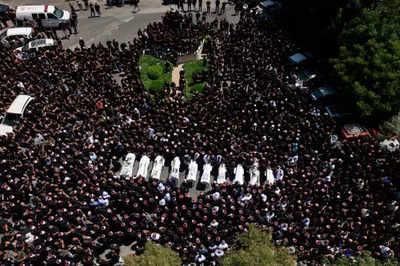
Why in news?
Israel has announced that it would retaliate strongly against Hezbollah, accusing the group of being responsible for a rocket attack that killed 12 children and teenagers at a football field in the Israeli-occupied Golan Heights.
Background of Golan Heights:
- The Golan Heights was captured by during the Six-Day War in 1967 from Syria and has since been a point of contention between the two nations. In 1981, Israel effectively annexed the territory, a move not recognized by the international community.
Strategic Importance:
- The Golan Heights offers a commanding view of northern Israel and southern Syria, making it a critical military and strategic area. Its elevation allows for surveillance and control over surrounding regions, including the ability to monitor movements from Syria.
Causes of the conflict:
- Support for Palestinians: Hezbollah’s attacks on Israel are framed as support for Palestinians facing Israeli bombardment in Gaza, particularly following the Hamas attacks on October 7, 2023. Hezbollah, as a member of the Iran-backed Axis of Resistance, has aligned itself with Hamas and other militant groups in the region.
- Historical Hostilities: The conflict is rooted in a long history of hostility between Israel and Hezbollah, which was founded in 1982 to combat Israeli forces in Lebanon. Hezbollah views Israel as an illegitimate state and seeks its removal, which fuels ongoing tensions and military engagements.
- Escalating Military Capabilities: Hezbollah has significantly enhanced its military capabilities since the 2006 war, possessing a large arsenal of rockets and advanced weaponry. This includes the ability to strike deep into Israeli territory, increasing the stakes for both sides in any conflict.
Implications of the Conflict
- Humanitarian Impact: The ongoing hostilities have resulted in significant civilian casualties and displacement on both sides of the border. Israeli airstrikes in Lebanon have killed Hezbollah fighters and civilians, while Hezbollah’s attacks have resulted in Israeli casualties. The humanitarian toll is exacerbated by the broader context of the Gaza war.
- Regional Stability: The conflict poses a risk of broader regional destabilization, potentially drawing in other actors and escalating into a full-scale war.
- Political Ramifications: The conflict has significant political implications for both Israel and Lebanon. In Israel, the displacement of civilians has become a pressing political issue, while Hezbollah’s actions may influence its standing within Lebanon and the broader Shiite community.
How escalation can be avoided on the Global Stage?
- Diplomatic Engagement: United States and other international actors must continue to engage in diplomatic efforts aimed at de-escalating tensions. This includes facilitating dialogue between Israel and Hezbollah, as well as addressing the underlying issues related to the Gaza conflict. A ceasefire in Gaza could help reduce hostilities in Lebanon.
- Regional Agreements: Need to make efforts to establish regional agreements that address territorial disputes and security concerns that can mitigate the risk of conflict.
- Monitoring and Mediation: International bodies, including the United Nations, should increase their monitoring of the situation and mediate discussions between the conflicting parties. This can help prevent misunderstandings and miscalculations that could lead to escalated military responses.
Role of India in this situation: (Way forward)
- Engaging with Arab Nations: India should also maintain and strengthen its relationships with Arab nations, including Lebanon, to ensure a balanced approach. This engagement can help India navigate the complexities of the situation and position itself as a neutral party that seeks to promote peace and stability in the region.
- Facilitating Dialogue: By promoting dialogue between the conflicting parties, India can help de-escalate tensions and work towards a peaceful resolution.
Mains PYQ:
India’s relations with Israel have, of late, acquired a depth and diversity, which cannot be rolled back. Discuss. (2018)
GS2/International Relations
Why are Russian athletes ‘banned’ from the 2024 Paris Olympics?
Source: New York Times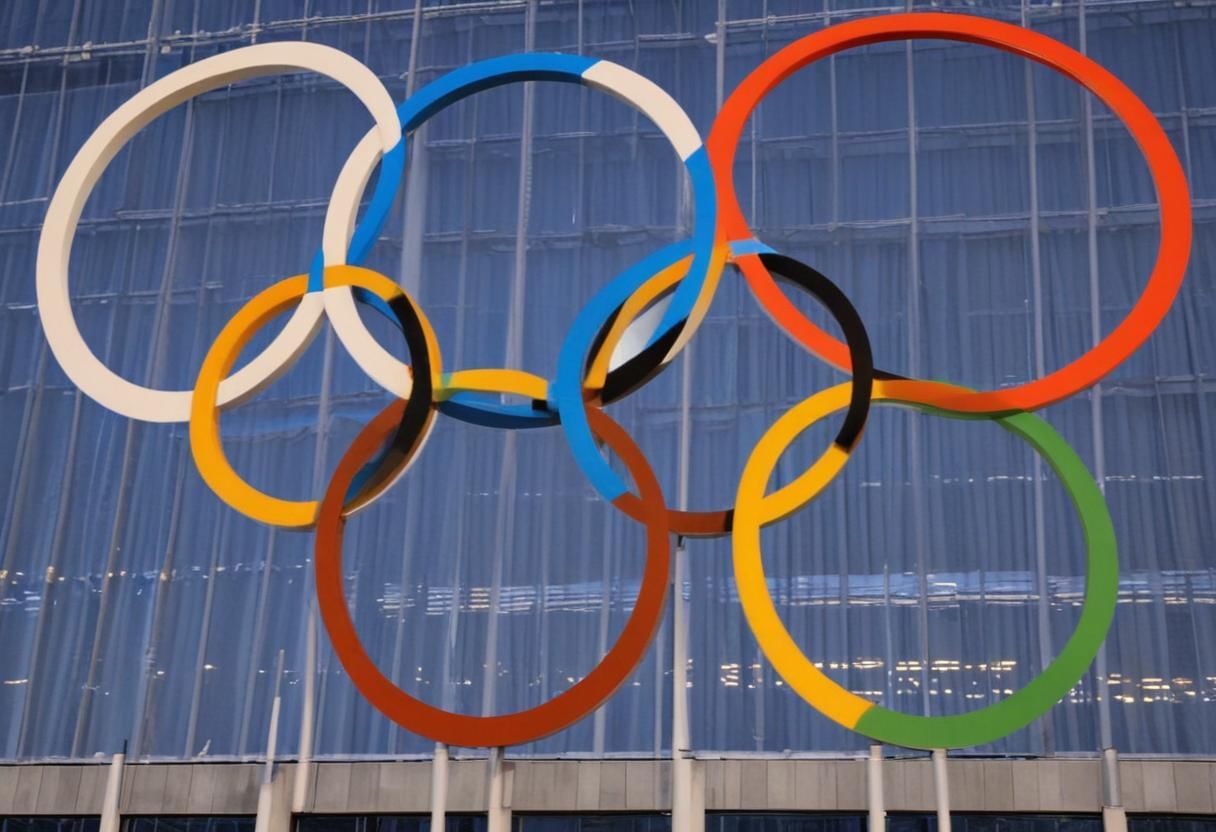
Why in news?
Athletes from Russia and Belarus are banned from participating in the ongoing under their nations’ official flags. Many of them compete under a separate category called Athletes Individuals Neutres (AIN) in French, which means Individual Neutral Athletes.
Reason
- The ongoing war in Ukraine and the conflict between Israel and Hamas add to the geopolitical tensions.
- The Paris Summer Olympics are “most geopolitically charged Olympics in decades.”
International Olympic Committee (IOC) Actions
- Russia and Belarus were sanctioned after the Russian invasion of Ukraine in 2022 which violated the Games’ Olympic Truce.
- Belarus was implicated for allegedly allowing Russia to use its territory for military purposes.
- In October 2023, the Russian Olympic Committee was suspended after declaring authority over Ukrainian sports organizations in certain regions.
Political Neutrality and Violations
- The IOC cited Russia’s International Friendship Association (IFA) as a political body violating the IOC charter.
- The charter states that within the Olympic Movement, political neutrality should apply.
- Russia’s announcement of Friendship Games in 2024 led to accusations of politicizing sports.
- Critics note that the concept of “political neutrality” is not based on objective criteria and is challenging to interpret consistently.
What is Individual Neutral Athletes (AINs)?
- The IOC allows athletes from these countries to participate as individual-neutral athletes (AINs).
- Athletes must not represent their country or any associated organization.
- They cannot actively support the Russian invasion of Ukraine.
- AINs are athletes with Russian or Belarusian passports qualified through existing systems.
- They will compete under a neutral flag and uniform, with a neutral song played if they win medals.
- Audience cannot wave their flags.
Do you know?
- The Indian Olympic Association was suspended in 2014, leading to three athletes competing under the Olympic flag.
GS3/Environment
Kerala landslide
Source: The Hindu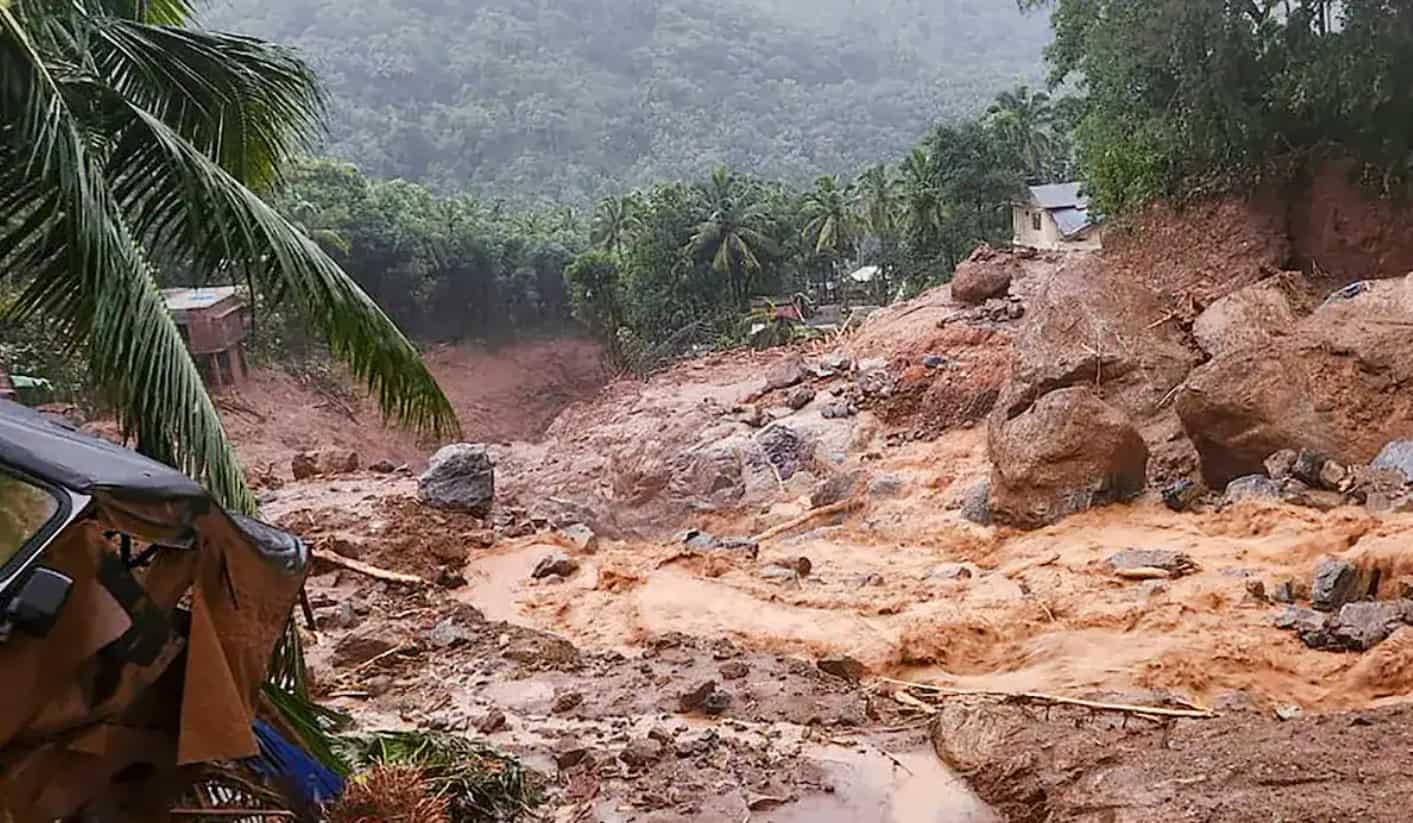
Why in news?
At least 144 persons were killed and 197 injured after multiple landslides flattened some three villages in Vythiri taluk of the hilly Wayanad district of Kerala early on July 30.
About
- A landslide is defined as the movement of a mass of rock, debris, or earth down a slope.
- Landslides are a type of "mass wasting," which denotes any down-slope movement of soil and rock under the direct influence of gravity.
- Landslides occur mainly in mountainous terrains where there are conducive conditions of soil, rock, geology, and slope.
Natural Causes
- Factors that trigger landslides include heavy rainfall, earthquakes, snow melting, and undercutting of slopes due to flooding.
- Landslides can also be caused by Anthropogenic Activities such as excavation, cutting of hills and trees, excessive infrastructure development, and overgrazing by cattle.
- In India, rainfall-induced landslide events are more common.
Classification and mapping of Landslides
- A massive landslide struck the hilly areas of Meppadi in Kerala's Wayanad district, killing at least 144 people.
- The tragedy occurred past midnight, with the first landslide hitting around 1 am and a second one following at 4:30 am.
Possible reasons behind Wayanad Landslide
- Heavy rainfall: The region received more than 140 mm of rainfall in 24 hours, about five times more than expected, triggering the landslides.
- Hilly terrain with sharp slopes: Western Kerala's hilly terrain with sharp slopes is highly susceptible to landslides.
- Loss of green cover: A 2021 study indicated that 59% of landslides in Kerala occurred in plantation areas, emphasizing the impact of deforestation.
- Climate change: Scientists link warming of the Arabian Sea to heavy and unpredictable rain patterns, increasing landslide risks.
Environmental neglect and mining
- The Western Ghats Ecology Expert Panel recommended declaring the Wayanad hill ranges ecologically sensitive, but these suggestions have not been implemented due to resistance.
- The panel advised banning activities like mining, quarrying, and large-scale energy projects in ecologically sensitive zones.
GS1/History and Art & Culture
India concludes 46th World Heritage Committee Session in New Delhi
Source: The Print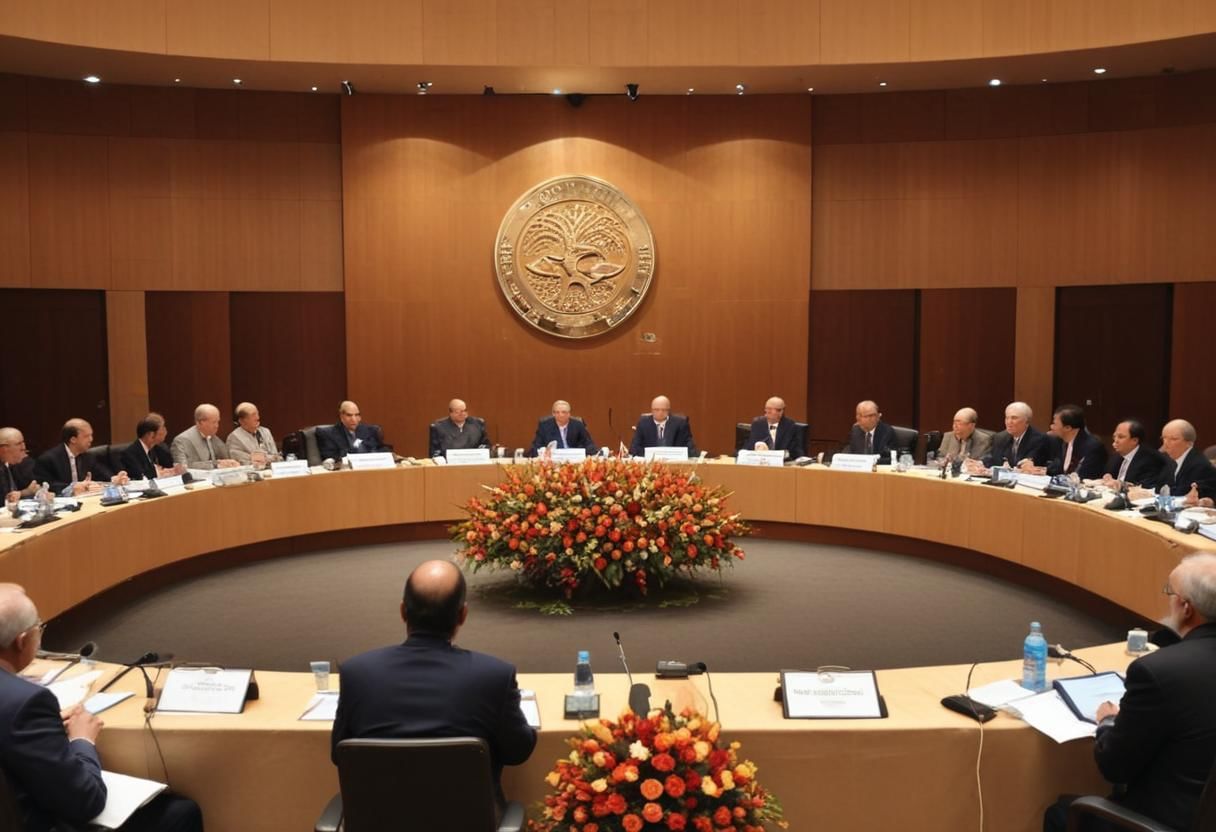
Why in News?
The 46th Session of the World Heritage Committee has concluded successfully. It was the first time India hosted this international assembly.
Capacity-building initiatives proposed by India:
- India pledged $1 million to the UNESCO World Heritage Centre to support capacity-building initiatives and conservation projects in developing countries.
- India proposed to develop and implement training programs for heritage professionals from around the world.
- India suggested exchange programs for heritage professionals and researchers.
Leading Indian heritage institutions, such as the Archaeological Survey of India and the Indian National Trust for Art and Cultural Heritage (INTACH), will play a key role in implementing the initiatives.
About the World Heritage Young Professional Forum:
- The World Heritage Young Professionals Forum is an initiative by UNESCO to engage young professionals in the field of heritage conservation.
- The first World Heritage Young Professionals Forum was organized in 1995.
- The primary aim is to engage young professionals in heritage conservation and management through capacity building, networking, and awareness-raising.
Back2Basics: UNESCO World Heritage Sites
Description:
- Landmarks or areas selected by UNESCO for their cultural, historical, scientific, or other significant value, legally protected by international treaties.
Importance:
- Represent collective and preservative interests of humanity, signifying remarkable accomplishments and intellectual history.
Selection Criteria:
- Sites must be already-classified landmarks, unique and significant culturally or physically, such as ancient ruins, historical structures, cities, monuments, etc.
Conservation:
- World Heritage Sites require practical conservation to protect them from risks like trespassing, uncontrolled access, or administrative negligence.
- UNESCO selects and monitors World Heritage Sites, manages the World Heritage Fund, and provides financial assistance. It is composed of 21 states parties elected for a four-year term.
Membership:
- India is not a member of the World Heritage Committee.
GS3/Economy
Status of Lithium Reserves and Exploration in India
Source: Indian Express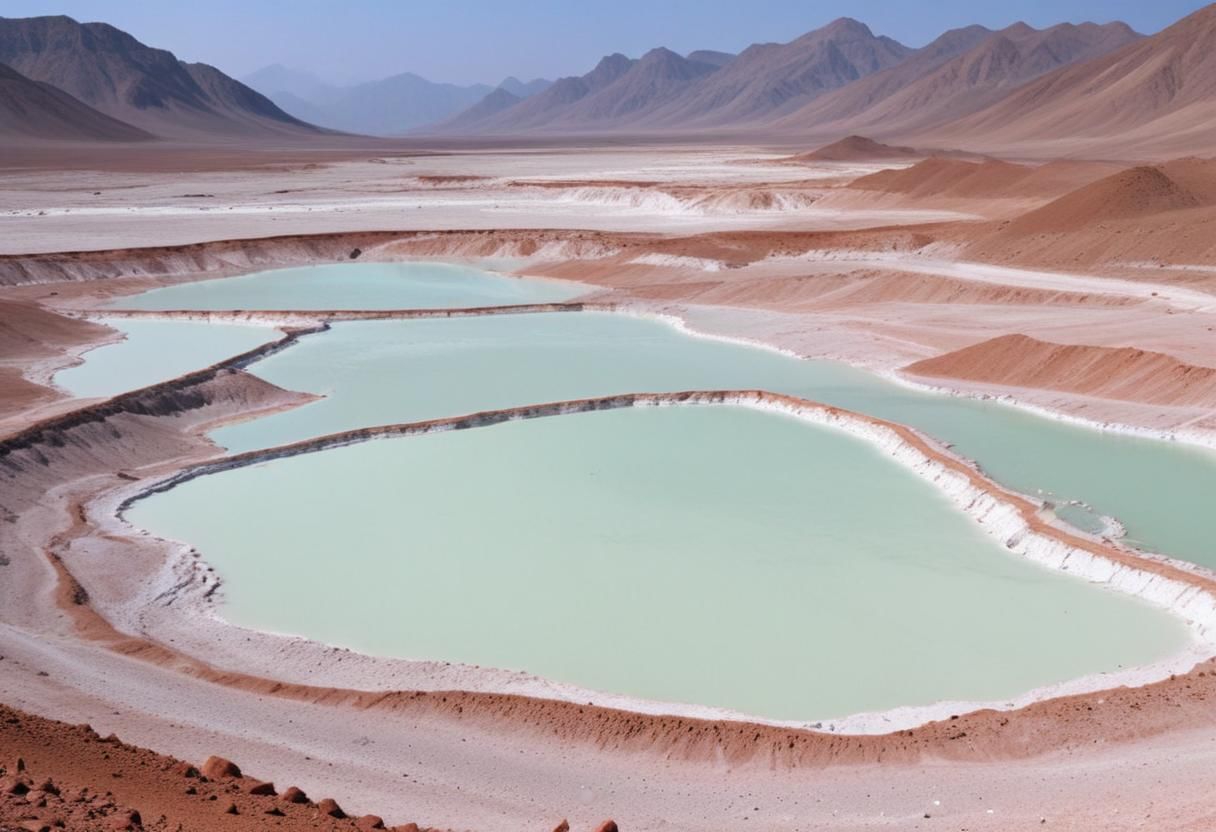
Why in News?
The Ministry of Mines had to cancel the auction for the lithium block in Jammu and Kashmir's Reasi district for the second time due to a lackluster investor response. This decision follows the announcement by the then Mines Secretary about the discovery of an inferred deposit of 5.9 million tonnes of lithium ore in Reasi, which was anticipated to be one of the largest deposits globally.
Lithium Reserves in India:
- Lithium is a soft, silvery-white non-ferrous metal and is a critical component in rechargeable batteries used in various devices like mobile phones, laptops, digital cameras, and electric vehicles. It is also utilized in non-rechargeable batteries for applications such as heart pacemakers, toys, and clocks.
- The Geological Survey of India (GSI) marked a significant milestone by establishing Lithium inferred resources of 5.9 million tonnes in Jammu and Kashmir's Reasi district, a first in India's history.
- Subsequently, the GSI discovered another reserve of this essential mineral in Degana, located in Rajasthan's Nagaur district. These newly found reserves are expected to be substantially larger than those in J&K and can potentially fulfill 80% of the nation's demand.
Challenges related to extracting and processing lithium include:
- Difficulty in extraction from hard rock pegmatite deposits
- Underdeveloped mineral reporting standards utilized in tender documents
- Complaints from prospective bidders regarding limited information in bid documents, small block size hindering modern tools application, lack of clarity on feasibility studies for lithium extraction, absence of investor-friendly resource classification codes, etc.
GS3/Economy
Futures & Options Trading
Source: Indian Express

Why in News?
The SEBI has proposed a series of short-term measures to curb speculative trading in index derivatives (futures & options).
About Futures & Options:
Futures and options are two fundamental types of derivatives in financial markets. They are financial contracts that derive their value from the performance of an underlying asset, such as stocks, commodities, currencies, or indexes. These instruments are used for hedging risks, speculating on price movements, and gaining leverage in financial markets.
About Futures Trading:
- Standardization: Futures contracts are standardized in terms of quantity, quality, and delivery date, facilitating liquidity and ease of trading.
- Leverage: Traders can control large positions with a relatively small amount of capital, known as margin.
- Obligation: Both the buyer and the seller are obligated to fulfill the contract terms at expiration unless the position is closed before the expiry date.
Applications:
- Hedging: Producers and consumers of commodities use futures to hedge against price fluctuations. For example, a wheat farmer may sell wheat futures to lock in a price for their harvest.
- Speculation: Traders use futures to speculate on price movements, aiming to profit from market volatility.
- Example: If a trader believes the price of crude oil will rise, they may purchase a crude oil futures contract. If the price increases, they can sell the contract at a profit.
About Options Trading:
- Right, Not Obligation: Unlike futures, options give the holder the right to execute the contract, providing more flexibility.
- Premium: The buyer of an option pays a premium to the seller for this right. The premium is the cost of the option.
Types of Options:
- Call Option: Grants the holder the right to buy the underlying asset at the strike price.
- Put Option: Grants the holder the right to sell the underlying asset at the strike price.
Differences Between Futures and Options:
- Risk and Reward: Futures involve higher risk as both potential gains and losses are unlimited. Options limit the buyer's loss to the premium paid, though potential gains are also substantial.
- Flexibility: Options provide more flexibility with the right to execute the contract, whereas futures require execution unless closed before expiry.
Short-term measures to curb speculative trading:
- The Securities and Exchange Board of India has proposed several short-term measures to curb speculative trading in index derivatives (futures and options), protect investors, and ensure market stability.
- Key proposals include restricting multiple option contract expirations, raising the size of options contracts, and implementing intraday monitoring of position limits.
These measures follow Finance Minister Nirmala Sitharaman's proposal to double the Securities Transaction Tax (STT) on futures and options from October 1, 2024, to address the surge in trading volume.
Need for Such Measures:
- SEBI's consultation paper noted that 92.50 lakh unique individuals and firms traded in index derivatives in 2023-24, incurring a cumulative loss of Rs 51,689 crore, with 85% of traders experiencing net losses.
- The paper recommends increasing the minimum contract size for index derivatives in two phases, reflecting the rise in benchmark indices over the past nine years.
- Additionally, SEBI suggests rationalizing options strikes, requiring upfront collection of option premiums, and eliminating margin benefits for calendar spread positions with contracts expiring on the same day.
- To mitigate high implicit leverage risks near options expiry, SEBI proposes increasing margins on the day before and on expiry day.
GS3/Environment
Mekedatu Project
Source: The Hindu
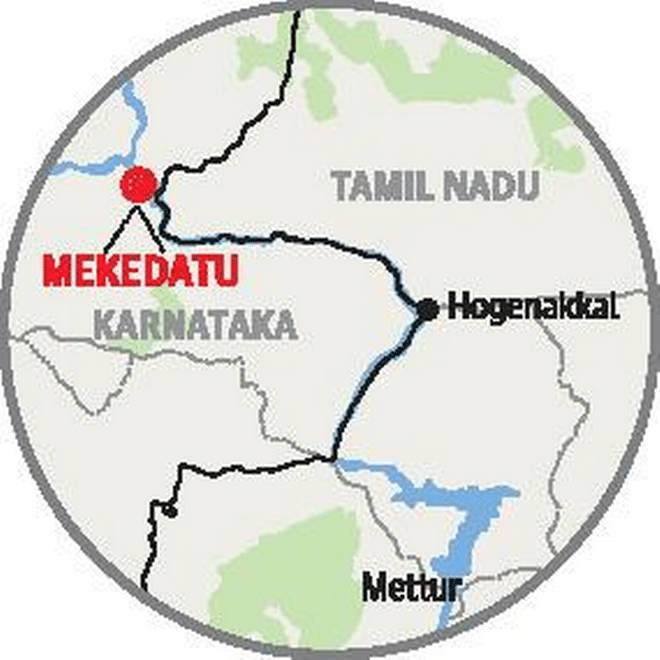
Why in news?
Karnataka CM has offered to discuss with Tamil Nadu, the implementation of Mekedatu Project across River Cauvery.
About Mekedatu Project
- Mekedatu is a location along Kaveri in the border of Chamarajanagar and Ramanagara Districts.
- Karnataka intends to build a reservoir near Mekedatu.
- The dam is proposed to have a capacity of 48 TMC feet and is estimated to cost Rs 6,000 crore.
- First proposed in 2003 with an intention to use the water for a hydro power station (400 MW) and supply drinking water to Bengaluru city.
- At Mekedatu, the Kaveri runs through a deep, narrow ravine of hard granite rock.
Tamil Nadu's concerns over the Project
- Tamil Nadu has strongly opposed the project, citing concerns over water-sharing arrangements between the two states.
- Tamil Nadu contends that the proposed dam violates the final award of the Cauvery Water Disputes Tribunal.
About Cauvery River
- The Cauvery River, also known as 'Kaveri', originates from Talakaveri in the Brahmagiri located in Karnataka's Kodagu district.
- It spans approximately 800 km, traversing through the states of Karnataka and Tamil Nadu, before discharging in the Bay of Bengal.
- The river's catchment area covers regions in Tamil Nadu, Kerala, Karnataka, and the Union Territory of Pondicherry.
- Key tributaries that join the Cauvery include Harangi, Hemavati, Kabini, Suvarnavathi, and Bhavani.
Justifications and proposals by Karnataka
- Karnataka argues that the construction of the Mekedatu dam will not hinder the stipulated quantum of water release to Tamil Nadu nor be utilized for irrigation purposes.
- The Karnataka government has earmarked Rs 1,000 crore for the project, indicating its commitment.
- The Central Water Commission cleared a feasibility study for the Mekedatu project in 2018, providing additional support for Karnataka's justifications.
PYQ
[2016] Recently, linking of which of the following rivers was undertaken?
- Cauvery and Tungabhadra
- Godavari and Krishna
- Mahanadi and Sone
- Narmada and Tapti
GS3/Science and Tech
National Pharmaceutical Pricing Authority (NPPA)
Source: Indian Express

Why in News?
The NPPA monitors the prices of scheduled as well as non-scheduled medicines under Drugs (Prices Control) Order, 2013 (DPCO, 2013), informed the Union Minister of State for Chemicals and Fertilizers.
What are Scheduled and Non-Scheduled Formulations?
Scheduled Formulations:
- Defined as formulations listed in Schedule-I of the Drugs (Prices Control) Order, 2013 (DPCO, 2013).
- Ceiling prices of these formulations are revised annually based on the Wholesale Price Index (WPI) for the preceding calendar year.
- NPPA is responsible for revising and notifying these prices.
Non-Scheduled Formulations:
- Not included in Schedule-I of the DPCO, 2013.
- Prices of these formulations can be increased by manufacturers, but the Maximum Retail Price (MRP) cannot be increased by more than 10% during the preceding 12 months.
- NPPA also monitors the prices of non-scheduled formulations to ensure compliance.
- Action is taken against companies selling formulations at prices higher than permissible, and overcharged amounts are recovered.
About National Pharmaceutical Pricing Authority (NPPA)
NPPA was set up as an independent regulator on August 29, 1997, for drug pricing and ensuring affordable access to medicines. It is an attached office of the Department of Pharmaceuticals (DoP), Ministry of Chemicals & Fertilizers. NPPA is not a Statutory or Constitutional Body.
Functions of NPPA:
- Fixation and revision of prices of 'Scheduled' drugs under Drug (Price Control) Orders. Scheduled drugs (15% of the pharma market) are allowed an increase based on WPI.
- Non-scheduled drugs (85% of the pharma market) are allowed an automatic 10% increase annually.
- Monitoring and enforcement of drug prices.
- Ensuring availability and accessibility of all medicines and medical devices, including non-scheduled drugs.
- Undertaking or sponsoring studies on drug pricing.
- Collecting and maintaining data on production, exports, imports, market share, and profitability of pharmaceutical companies.
- Advising the Central Government on changes or revisions in drug policy.
GS3/Environment
Reasons Behind Leh Flight Cancellations
Source: Indian Express
Why in news?
High temperature at high altitude is disrupting flight operations to and from Leh, located at nearly 10,700 feet above the mean sea level.
How do Aircraft Fly?
- Aircraft wings are designed with the top surface more curved than the bottom. As the aircraft moves, air flows faster over the top of the wings than beneath them.
- According to Bernoulli's principle, this faster-moving air results in lower pressure above the wings compared to the pressure below.
Bernoulli's Principle
- Within a horizontal flow of fluid, points of higher fluid speed will have less pressure than points of slower fluid speed.
Thinning of Air and Loss of Required Lift
- Higher temperatures cause air to expand and become less dense, resulting in fewer air molecules beneath an aircraft's wings to generate sufficient lift.
- Aircraft lose about 1% lift for every 3°C temperature increase.
Impact on Engine Performance
- Thinner air affects engine performance by reducing the oxygen available for combustion, thereby decreasing thrust.
- Planes need longer runways and more powerful engines to take off in hotter conditions due to reduced thrust.
Landing Becomes More Challenging
- Thinner air makes landings more challenging as it affects braking and reverse thrust functionality.
- In thin air, the reverse thrust generated might not be adequate for landing.
Situation at Leh
- Issues are particularly pronounced in airports at higher altitudes like Leh, where thin air and shorter runways exacerbate operational challenges.
Global Warming Impact
- The extreme heat affecting aircraft operations is a consequence of global warming.
- Since 1880, global average temperature has risen by at least 1.1°C, impacting air travel globally.
Studies and Projections
- A study on Greek airports in 2020 revealed reduced take-off weight due to warming trends, affecting lift and thrust.
- A 2023 study predicted increased take-off distances for aircraft by 2071-2080 due to rising temperatures.
Short and Long-term Solutions
- Airports must adapt by scheduling flights during cooler times, extending runways, and reducing take-off weights in the short term.
- Long-term solutions involve significantly reducing fossil fuel consumption to mitigate global warming.
GS2/Polity
The Case for a Legal Advisory Council
Source: The Hindu Why in News?
Why in News?
Legal insights from well-structured think tanks can be crucial in clarifying the true intent of specific legislation for the government.
Scope to Review the Process of Legal Consultancy
Need for Structured Legal Inputs:
- The National Democratic Alliance's handling of legal issues has been inadequate.
- Continuous, informed, and empirically valid legal inputs from structured think tanks are needed to clarify legislative intents.
Proposal for a Legal Advisory Council (LAC):
- Establishing a LAC similar to the Economic Advisory Council could provide the Prime Minister with timely legal analysis and insights.
- Helps preempt legal challenges and enhance the legislative process.
Need of Think Tank:
- Expert Legal and Policy Analysis:
- Informed and empirical legal analysis enhances the legislative process.
- Facilitation of Evidence-Based Decision Making:
- Contribution to evidence-based decision-making through research and data-driven insights on legal and social issues.
Recent Legal Issues and the Puttaswamy Case Judgment:
Electoral Bonds Scheme:
- The Supreme Court declared the electoral bonds scheme unconstitutional for violating voters' right to information.
- Importance of proportionality tests before implementing laws to balance privacy rights with transparency.
Aadhaar Act Intervention:
- Pre-implementation legal examination could have prevented the Supreme Court intervention in the K.S. Puttaswamy v. Union of India case addressing privacy concerns.
Transporter Strike:
- Concerns over the hit-and-run provisions in the Bharatiya Nyaya Sanhita, 2023 led to nationwide transporter protests.
- Highlighting the need for thorough legal viability assessments before introducing potentially problematic legislation.
Anticipating Challenges:
Proactive Legal Analysis:
- The proposed LAC would conduct legal analyses of issues referred by the government and perform research on contemporary legal matters proactively.
- Identification of potential legal challenges.
Engagement with National Law Universities:
- Leveraging expertise to enhance the legal consultancy process.
- Ensuring constitutionally viable and socially acceptable laws.
- Regular research inputs aiding in formulating better legislation.
Way Forward:
- The LAC should comprise legal experts, eminent jurists, academicians, and researchers specialized in fields frequently legislated upon by the government.
- Formal mechanisms for collaboration should be established.
- Committee for Reforms in Criminal Laws at the National Law University Delhi can facilitate exchange of ideas between government and academia.
GS2/International Relations
The different armed groups of Myanmar
Source: The Independent
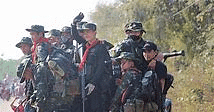
Why in news?
On July 25, Myanmar’s junta and an ethnic group both claimed control of Lashio’s military command after clashes began on July 3.
Background
- The 2021 Military coup in Myanmar triggered sustained violent resistance which undermined military control.
Ethnic Armed Organisations (EAOs)
- Resistance groups, including the People’s Defence Forces (PDFs) and the Brotherhood Alliance, have made significant territorial gains.
- The military’s fragile ceasefires have collapsed, leading to a loss of control in strategic areas, including Lashio, with reinforcements now concentrated near Mandalay.
The dominance of the Arakan Army
- Large parts of Rakhine province have fallen under the control of the Arakan Army, an ethnic Rakhine Buddhist armed group.
- The Arakan Army has seized territories on the borders with Bangladesh and is advancing towards important port cities on the Bay of Bengal coast.
- Control over these coastal areas gives the Arakan Army leverage to impact infrastructure projects in the region.
Objectives of Ethnic Armed Organizations (EAOs)
- Major EAOs aim to establish a genuine federal democratic structure with maximum autonomy for provinces.
- Carving out new nation-states is challenging due to complex ethnic geographies and overlapping claims over homelands.
China’s Influence
- China has engaged with multiple actors, including the military and various EAOs, to protect its investments in the region.
- Beijing has facilitated temporary ceasefires between the military and EAOs and maintains relations with armed groups.
- China has supplied defence equipment to both the military and EAOs, ensuring fragmented sovereignty in Myanmar.
India’s role
- India can share its experiences on federalism with stakeholders in Myanmar to help establish a new constitutional framework.
- India has shown potential to contribute to regional peace and prosperity in Myanmar through infrastructure projects in neighbouring countries.
Way forward
- Facilitate Dialogue and Mediation: Regional powers like India and China should facilitate dialogue between conflicting parties in Myanmar.
- Enhance Humanitarian Support and Development Initiatives: Increase humanitarian assistance in conflict zones, particularly in Rakhine State and areas controlled by the Arakan Army.
Mains PYQ
- Examine the scope of Fundamental Rights in the light of the latest judgement of the Supreme Court on the Right to Privacy (2020).
|
52 videos|5374 docs|1136 tests
|
















